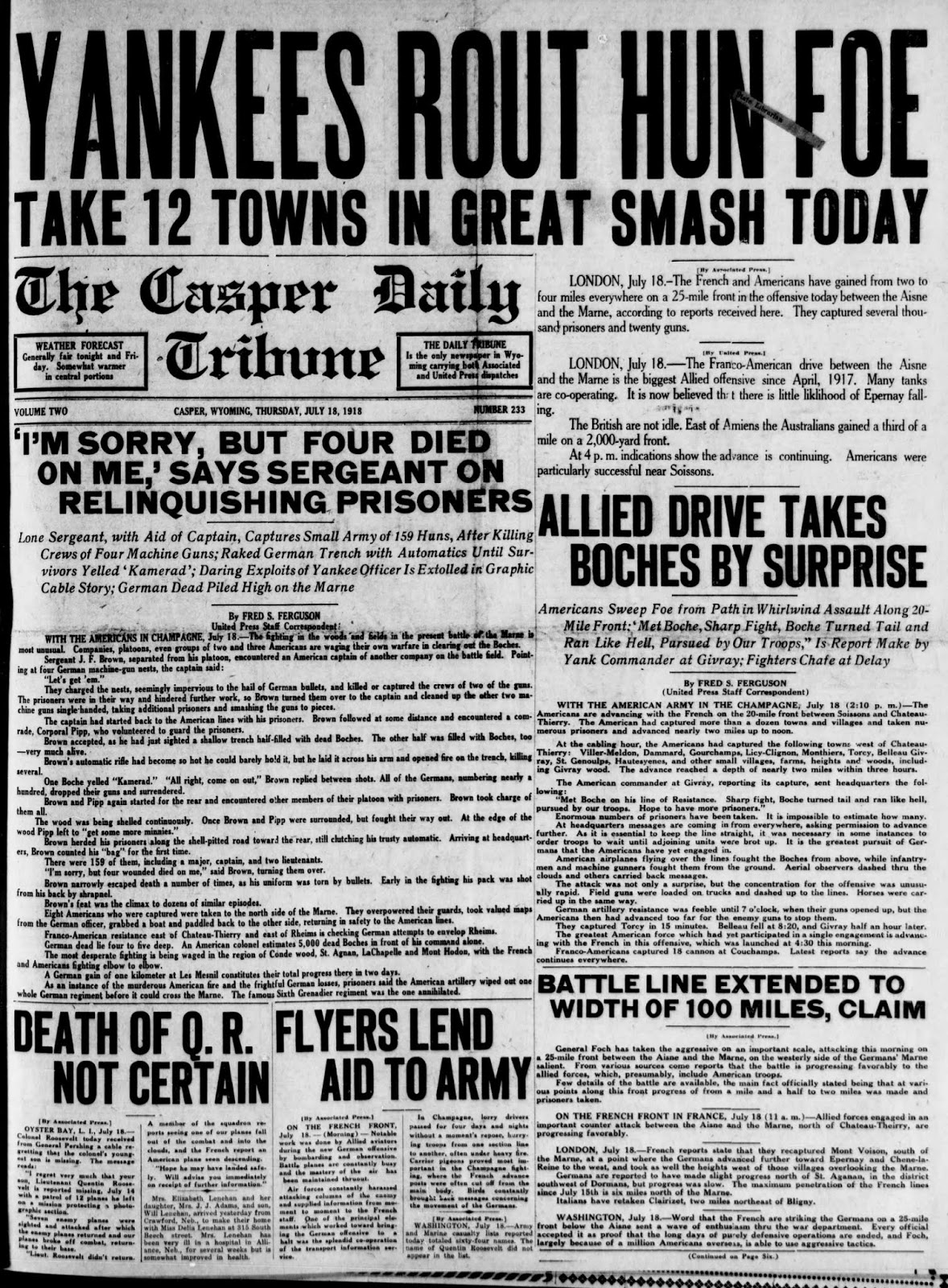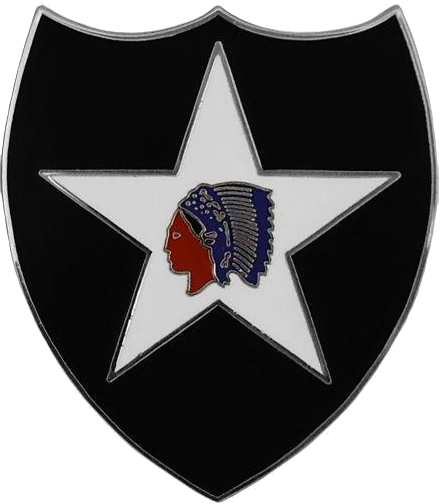The 3d, however, was only one of three U.S. Divisions that saw heavy combat, as U.S. Divisions, in the 1918 Spring Offensive of the Germans. The 1st and the 2nd also did.
Here we look at the 2nd, as it was the Division that won the Battle of Belleau Wood. Moreover, it was the most unique of the three for a reason we'll explore a bit in a second post.
The 2d Division was also made of up regular U.S. troops. I.e., it wasn't a National Guard Division nor was it made up of conscripts (although it would soon have them in the form of replacements). Here's the makeup of the WWI 2nd Division:
One thing that was really unique about this division is that it include a Marine Brigade. As noted, we'll explore that in greater depth soon, but the Marines entered their modern form, or started to, in the 2nd Division. They also saw significant combat with the 2nd Division, forming the bulk of the troops that fought at Belleau Wood while the rest of the 2nd Division was engaged nearby. Indeed, the Marine Corps was so associated with the 2nd Division that it was in fact twice commanded by Marine Corps general officers.
Charles A. Doyen, U.S.M.C. who commanded the 2nd Division during October and November, 1917, before returning to the United States. He was a victim of the 1918 Flu Pandemic and died in October 1918.
The 2nd Division saw heavy combat all trough the rest of the war and has gone on to be one of the stalwart standing US Infantry Divisions, having been long stationed in the Republic of Korea. It hasn't included Marines in its ranks, however, since 1919.
Headquarters
- 3d Infantry Brigade
- 9th Infantry Regiment
- 23d Infantry Regiment
- 5th Machine Gun Battalion

John A. Lejeune, who commanded the 2nd Division from July 28, 1918 until August 1919. He later became Commandant of the Marine Corps.
- 4th Marine Brigade: This will be further addressed in a later post, but as noted, the inclusion of a Marine Brigade in the 2nd Division shows how tight US forces really were early in the war. As will be explored later, Marines simply weren't regarded as regular ground troops until World War One and this was their first real use, large-scale, in this role.
- 5th Marine Regiment
- 6th Marine Regiment
- 6th Machine Gun Battalion
- 2nd Field Artillery Brigade
- 12 Field Artillery Rgt.
- 15th Field Artillery Rgt
- 17th Field Artillery Rgt
- 2nd Trench Mortar Battery
- 4th Machine Gun Battalion
- 2nd Engineer Regt
- 1st Field Signal Battalion
- Headquarters Troop. As previously noted, this was a cavalry troop drawn from a regular cavalry regiment, although I've forgotten what regiment it was drawn from in this instance.
- 2nd Train Headquarters and Military Police
- 2nd Ammunition Train
- 2nd Supply Train
- 2nd Engineer Train
- 1st, 15th, 16th and 23d Ambulance Companies and Field Hospitals.




































